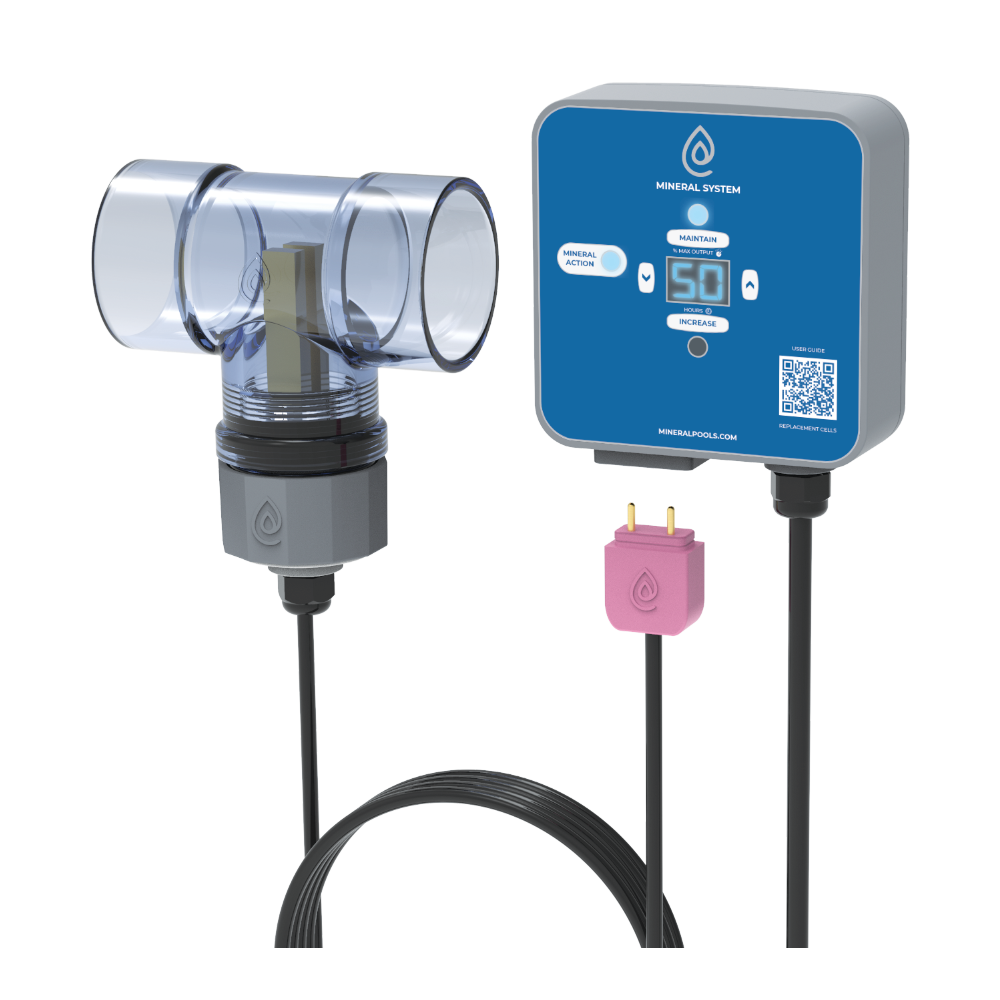The Good, the Bad, the Ugly
Copper has been used for water treatment for thousands of years. Ancient Greeks, Romans, and Vikings all discovered how copper could be used to prevent algae. Copper in a pool is a fairly recent thing that has benefits and drawbacks.
The pool industry has developed this discovery into various products used to treat algae. But can I drop a piece of copper into the pool skimmer and get the same results? Kind of. But some risks should be taken into account.
What causes high copper levels in pool water?
Copper can get into your swimming pool in a variety of ways. Since most residential plumbing is made of copper, you might even have copper in the pool from a fresh fill. Small amounts of copper from the pipes are dissolved in the water and can enter the pool when you fill it.
If you fill your pool from a well, there could be copper in the water from that as well, but well water is more likely to contain iron. Both copper and iron can be removed from the water by filling the pool with a hose filter.
Copper algaecides can also cause the copper level to go high. Several products on the market use copper as the active ingredient to either kill or prevent algae.
Pool ionizers that use copper can cause high copper levels in your pool. Many pool ionizer systems are overpowered, so it’s easy to get high copper levels quickly. However, even with properly regulated pool ionizers, you must be aware of the settings and frequently test the copper level to ensure it’s in the correct range.
Does copper kill or prevent algae in pools?
Yes! Copper is one of the best-known minerals for killing algae. So, a small dose of copper will get rid of algae and keep it away. As mentioned above, there are several copper algaecides on the market. Some are high concentrations which are meant to clear up green water, some are lower concentrations meant to prevent algae growth, and some are mixed with chlorine or other sanitizers.

Copper pool ionizers are designed to treat algae in pools. Some are powerful enough to kill back an algae bloom, but that added power means there is a higher risk of staining from high copper levels. Other systems are designed to maintain a low copper residual that is enough to prevent algae but not enough to clear up the water if it’s green.
Can I put copper pennies or copper fittings in my skimmer?
Adding copper fittings, pipe, or pennies to your pool can have some effect on algae growth. The copper from the metal objects slowly dissolves and reacts with the water to create copper ions that are toxic to algae. But this probably isn’t the best way to control algae in your pool. The dissolving process is very slow, and it will take a long time to generate enough copper ions to be effective.
Some products on the market use copper pipes for algae control. This only works well if it’s used with other products that accelerate the release of the copper into the water. Simply dropping a piece of copper pipe in the pool skimmer probably won’t have the desired results.
How do I lower the copper level in my pool?
For copper to be effective as an algaecide without causing staining, the ideal range is 0.2 ppm – 0.4 ppm. So, the first step to removing it is testing for it. If it’s in this range, it’s helping, so there is no need to remove it.
If the copper level is around 1 ppm, it’s still not a huge risk, but it’s a good time to shut off the pool ionizer or stop adding copper-based algaecides. You can also add a ‘chelating agent’ like The Ionizer Stuff, which ‘wraps’ the copper ions so they stay dissolved. This will help prevent staining with a high copper level.
If the copper level is over 1 ppm, you should first figure out why. If you don’t have a pool ionizer and haven’t been adding copper algaecides, your heater might have a problem. Many heaters use a copper or bronze (mostly copper) core. If the heater element is breaking down, normally due to age, it will release large amounts of copper into the water. If you have a heater and no other copper sources are being added, you should bypass it if possible and have it serviced.
Once you have figured out the copper source, you can use a ‘sequestering agent’ like The Magenta Stuff, which completely removes copper and other minerals from the water.
What’s the best way to put copper in a pool?
Copper is a natural mineral that prevents algae. Maintaining it in the right range is a low-cost way to keep the water crystal clear without using many chemicals. Liquid algaecides and pool ionizers are the most common ways of putting copper in a pool.
The benefit of copper algaecides is that you can quickly increase the level, which is useful if you are trying to clear a green pool. However, it’s easy to overdose the pool with copper, which can lead to staining.

The benefit of pool ionizers is that you can regulate the copper output and test for it. This makes it easier to keep it in the right range for preventing algae but not so high that it will lead to stains.
Copper swimming pool systems
For further reading, check out these systems and products that use copper for swimming pools.
ClearBlue Mineral System – EPA-registered sanitizer for pools
Mineral Lion Pool Ionizer – Advanced but low-cost pool ionizer
Pristine Blue – Copper sulfate pentahydrate liquid for pools
Copper Algaecide – Concentrated chelated copper for algae bloom treatment
Pool Rx – Copper algaecide baskets
Amazon links on this page are affiliate links



